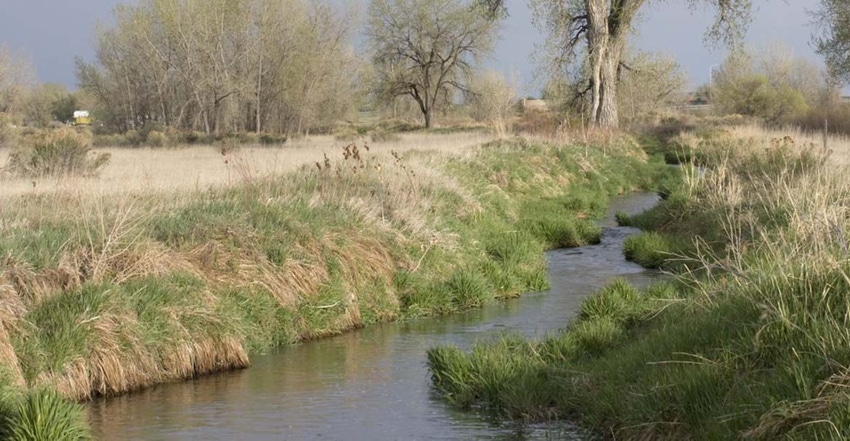Trump's EPA defines WOTUS
The revised definition identifies four categories of waters that are federally regulated under the Clean Water Act.
January 23, 2020

The Environmental Protection Agency has defined the Waters of the United States rule with the Navigable Waters Protection Rule.
"Our new Navigable Waters Protection Rule strikes the proper balance between Washington and the states in managing land and water resources while protecting our nation’s navigable waters, and it does so within the authority Congress provided," said EPA Administrator Andrew Wheeler.
Here's highlights:
The EPA and the Army recognize the difference between federally protected wetlands and state protected wetlands.
The revised definition identifies four categories of waters that are federally regulated under the Clean Water Act: the territorial seas and traditional navigable waters; perennial and intermittent tributaries; certain lakes, ponds, and impoundments; and wetlands that are adjacent to jurisdictional waters.
This action details what waters are not subject to federal control, including features that only contain water in direct response to rainfall; groundwater; many ditches, including most farm and roadside ditches; prior converted cropland; farm and stock watering ponds; and waste treatment systems.
Reaction has poured in. Here's a sip.
“The days are gone when the federal government can claim a small farm pond on private land as navigable waters,” Agriculture Secretary Sonny Perdue said. “With reforms and deregulation, Americans once again have the freedom to innovate, create, and grow.”
The rule "provides clarity and certainty, allowing farmers to understand water regulations without having to hire teams of consultants and lawyers," said American Farm Bureau Federation President Zippy Duvall.
“We are pleased that this rule replaces the 2015 rule, which was cumbersome and confusing, and that new regulation will better provide certainty and clear direction for our farmers.” said Bill Gordon, soy grower from Worthington, Minn., and American Soybean Association president.
"This new rule gives the flexibility and clarity needed to implement stewardship practices without the threat of government action," said National Corn Growers Association President Kevin Ross. "The final WOTUS rule will protect our nation’s water and be implemented without confusion, welcome news for farmers."
"The new rule more clearly defines which waters are subject to federal jurisdiction and which waters are subject to state protection, clarity that was severely lacking in the 2015 rule," said The Fertilizer Institute Vice President of Stewardship and Sustainability Lara Moody.
"The new rule clearly defines which waters are subject to federal jurisdiction and which waters are subject to state protection, clarity that was severely lacking in the 2015 rule," said The Fertilizer Institute Vice President of Stewardship and Sustainability Lara Moody.
“The new rule allows us as landowners to retain rights over our private property. The rule has been replaced with common sense regulations on our land,” said Ben Weinheimer, Texas Cattle Feeders Association."This allows us to conduct business while working to protect and conserve natural resources without unnecessary bureaucracy."
BREAKING: This administration just gutted the Clean Water Act to open up bodies of water in every state to pollution.
— Friends of the Earth (@foe_us) January 23, 2020
We cannot let this happen.#WOTUShttps://t.co/Z0k0VwSaTr
BREAKING: Today, the administration announced its final #WOTUS rewrite, gutting clean water protections across the country. This marks their second rollback of key environmental protections in two weeks. #ProtectCleanWater #ProtectNEPA https://t.co/iw5TuLxZz4
— National Parks Conservation Association (@NPCA) January 23, 2020
About the Author(s)
You May Also Like



